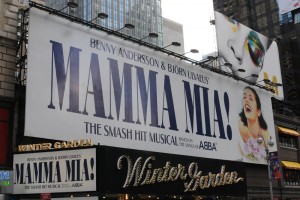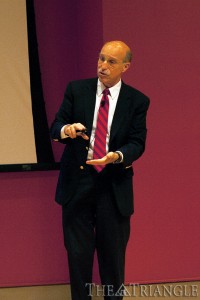Drexel University has long had a good name as an engineering and business school, and more recently became the largest private medical school in the country, but did you know that Drexel also offers degrees in the social sciences? The programs, none of which rank among the most popular majors, clearly need reform if they are to enjoy the same reputation. In particular, I feel there are several changes that could improve my own majors: history and political science.
The placement of both majors in the Department of History and Politics is questionable. They are broad topics in which many more degrees could be offered. For example, we have no program specifically in ancient history (unlike the University of Pennsylvania) or specifically American history or European history. Nor is a degree in international relations available. If more degrees were offered, two separate and more specialized departments could be formed.
A split in the Department of History and Politics is just the first step, though. Surely the social sciences are not exempt from Anthony J. Drexel’s mission of creating an institute for practical education. How can co-ops prepare students for professional life if co-ops for history and political science majors are typically not worth a paycheck? The University needs a professional expansion in addition to an academic one if it is to give students an education they can put to productive use. History majors can already get a useful accelerated master’s degree in library and information science, but for political science students I propose something bolder: the establishment of a School of Government.
Like similar institutions at other leading universities, the Drexel School of Government could be geared towards preparing students for work in public administration, corporate policy departments and nonprofit organizations. Not only that, it would serve as a feeder program for the School of Law and as a better-fitting home for existing majors like environmental policy. Drexel has an opportunity to stand out by giving majors with traditionally bleak job prospects a practical education that gives them equal chances of success in both professional life and academia.
Now, I can already hear the complaint that more courses and more professors inevitably mean more tuition. That is a perfectly reasonable sentiment, but keep in mind that each president seeks to grow the University’s endowment. Constantine Papadakis brought in $560 million. If the establishment of a School of Government is made a long-term goal, and President John A. Fry continues the pattern of growth Papadakis started, it can be realized even without a tuition hike or a wealthy benefactor to name the building after. A lack of funding in the present should not stop long-term strategic planning.
That said, there are some practical steps that can be taken right now at essentially no cost. History majors need 30 credits worth of unspecified 200+-level history courses and 41 free elective credits, while a political science degree takes 30 credits of 300+-level major courses and 40 free credits. That’s an awful lot of unspecified work. With optional concentrations, students could get a more structured experience that is recognized on their transcript. Potential future majors could be made concentrations right now — a history concentration in military history would include existing courses on America’s major wars, a political science concentration in pre-law would contain Philosophy of Law, Criminal Justice and the Constitutional Law sequence.
In the past few decades, the University has committed itself to a wide academic offering. That means it must go beyond its specialties and shore up those areas in which it is weaker. And each one of those degrees must give students the opportunity to serve society in a productive capacity — that’s what makes them worthy of the Drexel name.
Kim Post is a copy editor at The Triangle. He can be contacted at kim.post@thetriangle.org.
The post A school of government appeared first on The Triangle.




